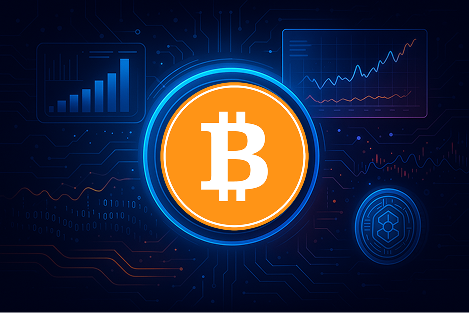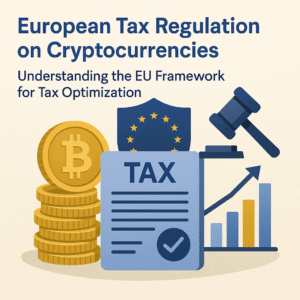EOS Price: Crypto Analysis, Functionality and Token Utility

Learn how the EOS crypto works, its token utility, use cases, and whether investing in EOS makes sense for your portfolio.
EOS is a blockchain designed to run large-scale decentralized applications (dApps) with high speed and energy efficiency. Its performance-driven architecture and DPoS consensus mechanism attract developers, enterprises, and investors. This comprehensive analysis explains EOS’s technical foundations, real-world use cases, influencing factors, and how to buy or invest in EOS wisely.
Key takeaways
- Short-term volatility: driven by ecosystem developments and partnership announcements
- Key influencing factors: DAO governance, dApp adoption, regulatory changes
- Long-term growth potential: strong, with enterprise, gaming, finance, and social use cases
- Positioning vs. major cryptos: strong scalability alternative to Ethereum, with structured governance
Introduction to EOS: A High-Performance Blockchain for dApps
Symbol: EOS Category: Layer 1 Blockchain, Smart Contract Platform Main Function: Executing scalable dApps with fast, feeless transactions Project Objective: EOS aims to deliver a highly scalable and energy-efficient blockchain infrastructure tailored for industrial-grade decentralized applications. The EOS token powers the ecosystem launched by Block.one in 2018. It enables access to network resources (CPU, NET, RAM), facilitates governance through block producer voting, and serves as a feeless medium of exchange. EOS stands out with its Delegated Proof of Stake (DPoS) consensus, combining speed, security, and energy efficiency. The EOS Network Foundation, launched in 2021, plays a central role in revitalizing and governing the ecosystem.How EOS Works: Technical Architecture and Token Utility
EOS is built to handle scalable decentralized apps efficiently, offering rapid, feeless transactions.Consensus: Delegated Proof of Stake (DPoS)
Token holders elect 21 block producers who validate transactions. This mechanism supports high throughput, low latency, and lower energy usage.EVM Compatibility
With EOS EVM integration, EOS is now Ethereum-compatible. Developers can deploy Solidity smart contracts while enjoying better performance and lower costs.Technical Highlights
- Interoperability: EOS EVM enables smooth dApp migration from Ethereum
- Oracles: Integrates real-world data into smart contracts
- Layer 2: While EOS is Layer 1, it’s compatible with Layer 2 enhancements
EOS Token Utility
- Staking: Access to CPU/NET/RAM network resources
- Governance: Voting for block producers and network upgrades
- Transactions: Native usage with no direct fees
EOS History and Project Creation
EOS was launched in June 2017 by Block.one, a company based in the Cayman Islands. It became one of the most successful fundraising projects in crypto history.Timeline and Milestones
- 2017–2018: Record-breaking $4.1 billion ICO
- June 2018: EOS mainnet officially launched
- 2019: $24 million SEC settlement for unregistered ICO
- 2021: EOS Network Foundation (ENF) founded
What Makes [Nom cryptomonnaie] Unique?
EOS Features: Use Cases, Value Proposition and Comparison
Innovative Use Cases
- Ubuntu Energy Ledger: Renewable energy access through micro-loans
- All_ebt: Online food stamp payments
- DACTROIT: Local currency and internet access DAO
- Emanate: Instant music royalties and community governance
- Eva: Cooperative ride-sharing alternative
Unique Value Proposition
- Feeless transactions: Access to CPU/NET/RAM via token staking
- High scalability: Up to 4,000 TPS using DPoS
- EVM compatibility: Easy dApp porting from Ethereum
- Community governance: Token holders directly influence decisions

Conclusion and Outlook for EOS
EOS continues to evolve with a focus on performance, Ethereum compatibility, and transparent governance. Thanks to the EOS Network Foundation, it is regaining traction among dApp projects. Its future depends on maintaining technical innovation, decentralized governance, and strong developer adoption. EOS remains a credible Layer 1 infrastructure for scalable, real-world Web3 applications.
FAQ
- What is the EOS token used for? EOS tokens give access to network resources, enable voting for block producers, and facilitate feeless transactions.
- Is EOS a good investment? EOS has potential if its ecosystem continues to expand around EVM support, scalability, and active community governance.
- How is EOS different from Ethereum? EOS supports feeless transactions, faster execution, and EVM compatibility compared to Ethereum’s higher gas costs.
- Where can I store EOS tokens? EOS tokens can be stored on Anchor Wallet, Ledger, or MetaMask via EOS EVM.
- Is EOS a secure project? Yes, EOS uses a robust DPoS consensus and is governed transparently by the EOS Network Foundation.
- How can I buy EOS? EOS is available on Binance, Kraken, and other major exchanges.
Disclaimer :
Trading is risky and you may lose all or part of your capital. The information provided does not constitute financial advice and/or an investment recommendation
Top-Rated Platforms to Trade Crypto
Explore Our Financial Views on the Market
Crypto News & Insights
Digital Assets Forum 2026 returns to
The Digital Assets Forum (DAF), one of Europe’s most respected...
Blockchain and Cryptocurrency Conference (B2C’ 2025):
The Blockchain and Cryptocurrency Conference (B2C’ 2025) is scheduled for...
European Tax Regulation on Cryptocurrencies: Understanding
The regulation of the cryptocurrencies market in the European Union...













